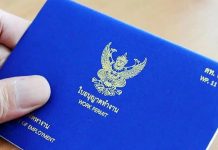
PATTAYA, Thailand – Baht buses, also known as songthaews, are one of Pattaya’s most iconic and affordable transportation options, offering a convenient way to get around the city. With fares traditionally set at 10 to 20 Baht per ride for locals and tourists alike, these open-air pickup trucks are an essential part of the city’s public transport system. However, growing concerns have emerged about baht buses allegedly overcharging foreign passengers, leading to frustration among tourists and expatriates.
Complaints of Overcharging
Many visitors and expats have reported being asked to pay fares well above the standard rate. Instead of the usual 10-20 Baht, some foreign passengers claim they were charged 50 to 100 Baht or even more for short distances. These instances often occur when baht buses are hailed for private rides, or when drivers assume that foreigners are unaware of the standard pricing.
Common Situations Where Overcharging Happens
Hailing a Private Ride: If a passenger signals a baht bus and negotiates a specific destination rather than using the regular shared route, the driver might charge a much higher fare. This practice is considered normal, as it turns the baht bus into a private taxi. However, some foreigners may not realize they’re entering into a private arrangement.
Language Barriers: Foreign tourists unfamiliar with Thai or Pattaya’s transportation norms may struggle to clarify the fare or route, leaving them vulnerable to overcharging.
Tourist Areas: Overcharging complaints are most common in tourist-heavy zones, such as Walking Street, Beach Road, or Jomtien Beach, where drivers may target visitors who appear unfamiliar with local customs.
Efforts to Address the Issue
The Pattaya City administration and transport authorities have long been aware of these complaints. Officials periodically remind baht bus operators to adhere to standard fare policies to maintain the city’s reputation as a tourist-friendly destination. However, enforcement can be inconsistent, and the lack of visible signage indicating standard fares adds to the confusion.
Some expat groups and travel forums have suggested increasing awareness among tourists by distributing fare guidelines or introducing an app-based system for baht buses, similar to ride-hailing services like Bolt or Grab.
Tips for Avoiding Overcharges
Know the Standard Fare: For most shared rides within the city, expect to pay 10-20 Baht. For longer distances or private hires, negotiate the price in advance.
Use Google Maps: Having a clear understanding of your route can help avoid unnecessary detours or inflated prices.
Stand Firm: Politely but firmly insist on the standard fare if the driver demands more, especially on regular shared routes.
Consider Alternatives: Ride-hailing apps like Bolt and Grab are popular alternatives that often provide more transparent pricing.
While baht buses remain an essential part of Pattaya’s charm, addressing issues of overcharging is crucial to ensuring a positive experience for all visitors. By being informed and cautious, tourists can enjoy this iconic mode of transportation without worry.










